THE SANGUINE ROOT VISITED THE SCHUYLKILL CENTER FOR ENVIRONMENTAL EDUCATION AND LEFT WITH A DEEPER UNDERSTANDING OF NATURE AFTER A LONG HIKE AND SOME GREAT NATIVE PLANTS PURCHASED AT THEIR NATIVE PLANT SALE.
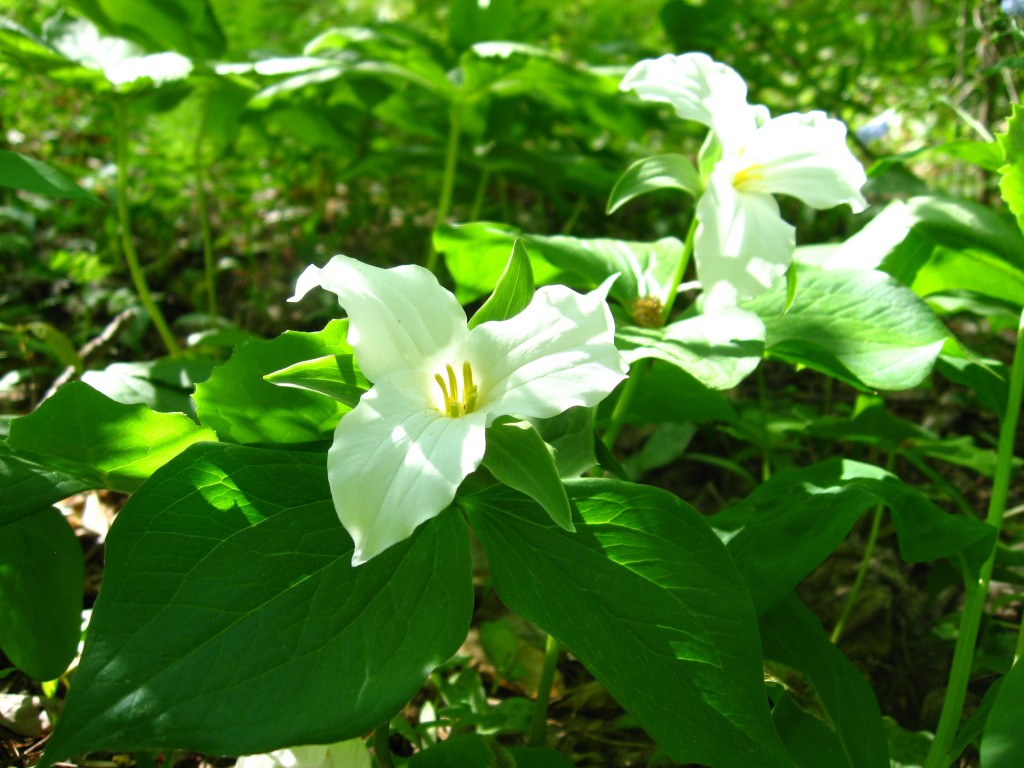
We had no idea what to expect. Â We came with an open mind and the native plant sale had two small trees/large shrubs we had been planning to purchase for our back alley for some time now. Â These would be a Serviceberry and a Pussy Willow. Â We also bought Joe-pye weed for our sunny back-yard. Â We also bought one more Pinxterbloom Azalea. We examined each and every plant at the sale. Â The Trillium grandiflorum, pictured above growing in the wild, was available. Â We had never been to the Schuylkill Center before, and the native plant sale was our introduction. Â We wanted to tour the grounds, which included a ravine that leads to the Schuylkill River. Â A ravine holds promise of wildflowers and a unique environment. Â The staff was very accommodating and let us store our new plants in a safe place, while we explored the property.
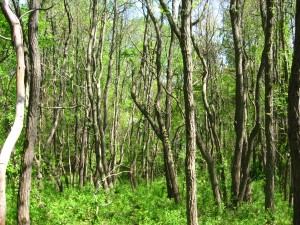
The center itself is located on what was farmland until the mid 1960s.  So the path down to the ravine was a lesson for us in reforestation. What we saw was a 45 year old forest.  There were whole areas, where there were no other trees but the pioneer native species Sassafrass albidum.  A few Tulip Poplars (Liriodendron tulipifera)  and Flowering Dogwood were also noted (the blooming Dogwood was very noticeable and beautiful). The shrub and herb layer was dominated by  the exotic invasives Japanese honeysuckle, Asiatic bittersweet, Garlic Mustard, Wineberry and Privet.  We also saw  the Japanese Angelica tree in an advanced state of infiltration, with mature stands.  Even with the multitude of environmental problems, there was evidence that there was a concerted effort at reforestation and invasive management.  Vines were being removed from trees in an effort to allow reforestation to restore the canopy.  Deer fencing was initiated, presumably to allow oaks, beeches and hickories a chance at creating a healthy canopy, as well as fostering a diverse woodland habitat of shrub and herbaceous species and the insects and birds that depend on them.
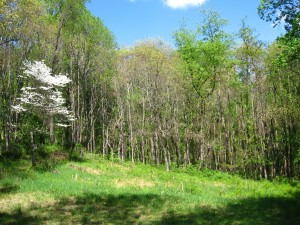
45 years after a farmland was purposely allowed to begin reforestation, with some help along the way. Note the flowering Dogwood (Cornus florida).
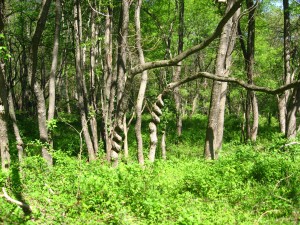
The Sassafrass trees above have been through some tough times.  With a bit of human intervention, the vines were removed and the trees were able to continue growing.  In the middle of this picture, there is visible evidence of  vines that were strangling the trees at one time.
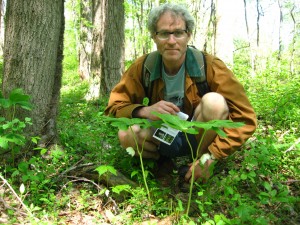
Blooming stands of Mayapples were to be found growing alongside the Japanese Honeysuckle in the former farm fields. We also saw Jack-in-the-pulpit, Spring beauties and Wild geranium in this emerging native forest. The Schuylkill Center provides visitors with a very useful and informative pamphlet that has a map, as seen in Sean’s hand.
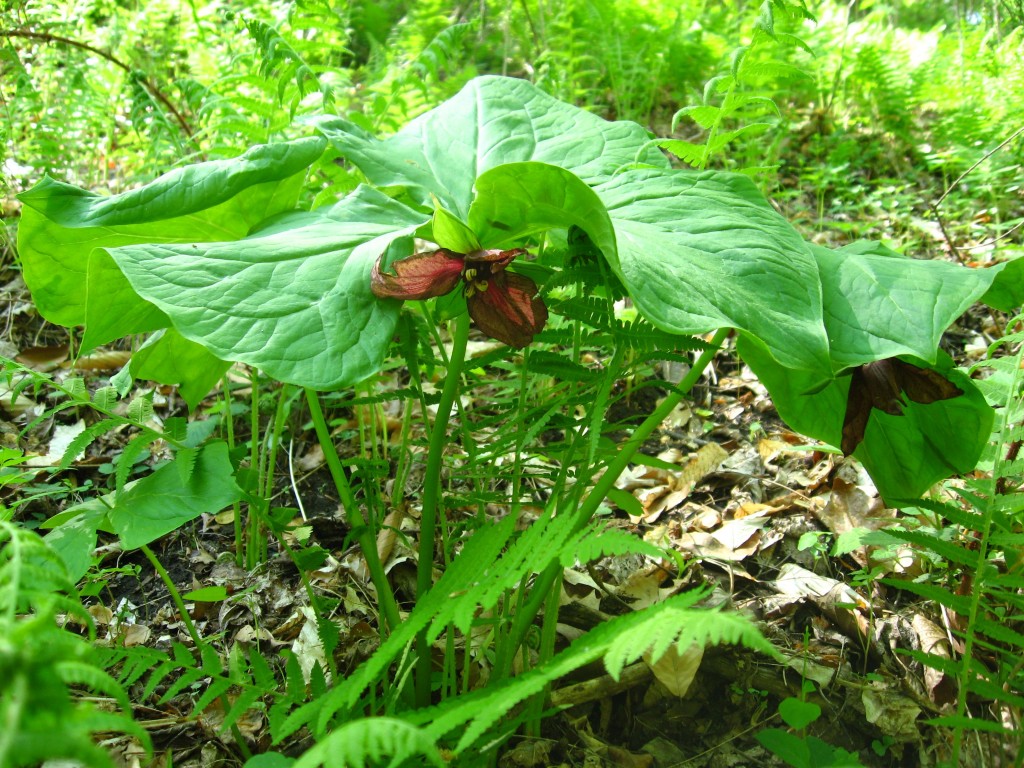
At one point the path dipped and the grade became noticeably steeper. Â We began to enter an area that was no longer a former farm field, but a vestigial woodland, left undisturbed for the most part. Â Immediately there were an abundance of ferns, False and true Solomon’s Seal, and Trillium erectum pictured above and below. We had entered a protected rich ravine of the Schuylkill River Valley.
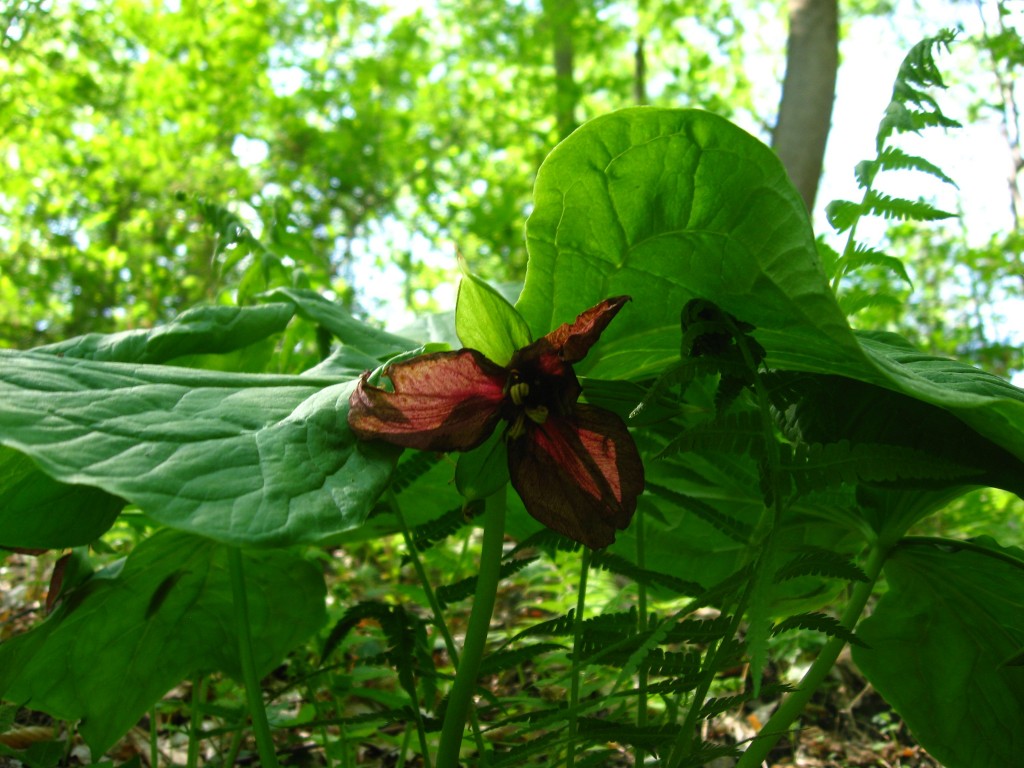
This ravine reminded us of Shenks Ferry, along the Susquehanna River. Â Here we are, in the City of Philadelphia, with Blooming stands of Trillium before us, along with an abundance of Blue phlox,Virginia Bluebells, Spring Beauties, Mayapples, Jack-in-the-pulpit, Wild geranium, and Violets.
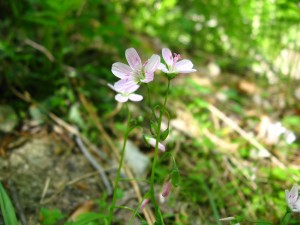
There are vast stands of  the Spring Beauties (Claytonia virginica) along the path.
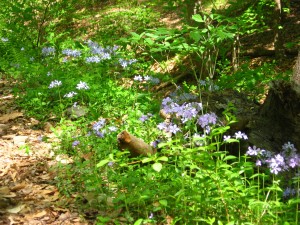
The Blue Phlox (Phlox paniculata) was at its peak, with large colonies blooming all along the gently winding ravine path. This was the first time we had ever seen such a magnificent display.
We noticed that there was not a problem with the invasive Lesser celandine (Rununculas ficaria), in this area, and we are grateful of that. An area such as this should be protected from this menacing invasive. Â However, there was a problem with Garlic mustard (Alliaria petiolata) and wineberry (Rubus phoenicolasius) Â growing in the ravine, much of this side-by -side with Trillium grandiflorum, Trillium erectum and Trillium cernuum.
We thought that if this ravine was within the scope of our environmental restoration activities, we would remove the invasives from this most spectacular ravine first and foremost, with the intention to prioritize the least disturbed areas.
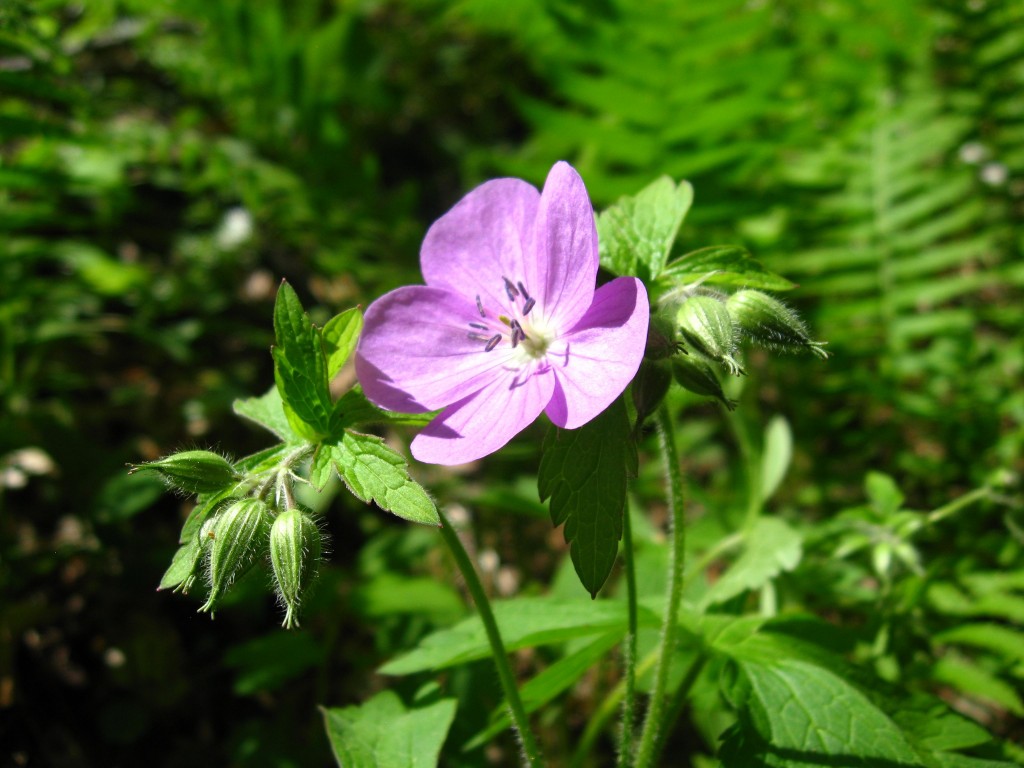
The Geranium maculatum, our Wild geranium is beginning to bloom. Â Note the ferns in the backround.
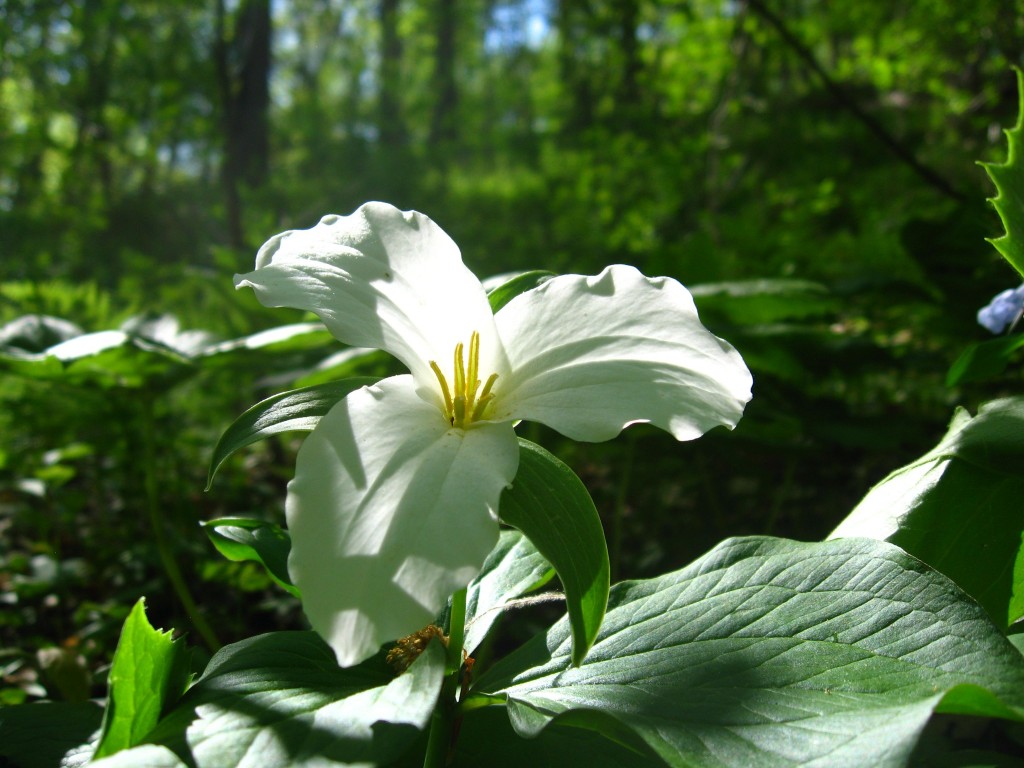
Finding the Trillium grandiflorum blooming in the wild  was a pleasant surprise. This was the only spot we had ever seen it in the City of Philadelphia just growing on its own. Note the Bluebell at the far right of the picture.
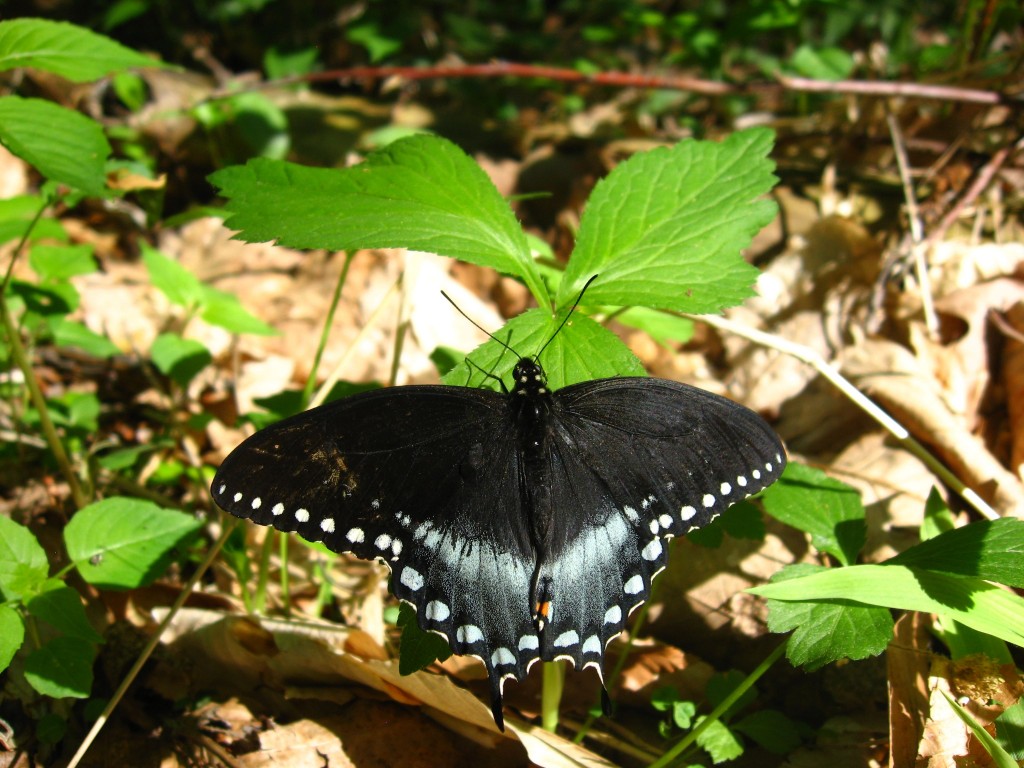
We got the chance to see the Spicebush swallowtail butterfly (Papilio troilus). Â This one stood still for us to get a picture. Â What a magnificent butterfly!
For the past week, we had been trying to get a picture of a smaller white butterfly that has been flying around the Garlic Mustard in Morris Park. Â However this white butterfly will not stay still long enough for us to identify and photograph it.
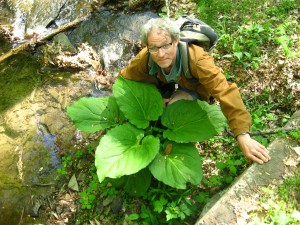
The Skunk cabbage (Symplocarpus foetidus) has reached a mature size on this April 3oth 2011 here in Philadelphia. Sean (For size) is almost dwarfed by the grand leaves of this much admired native wetland plant.
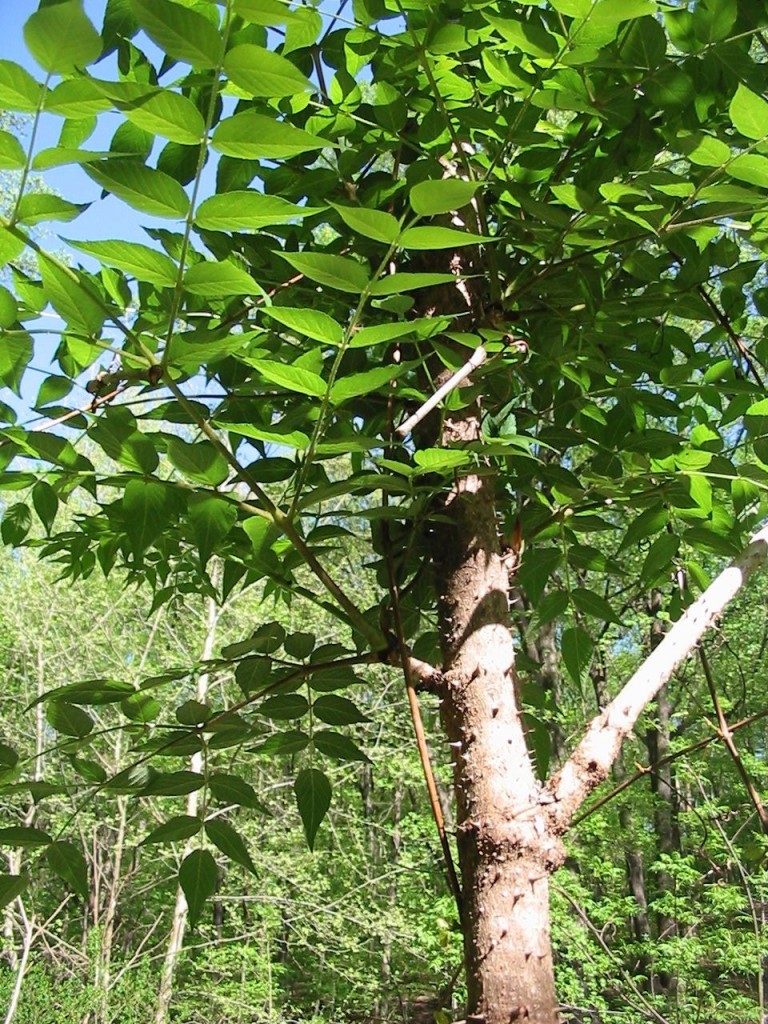
Here we are, before the dreaded Aralia elata, the Japanese  Angelica tree.
If you find this tree on your property, or on land in which you are engaged in a stewardship role, we at the Sanguine Root strongly encourage you to make all efforts at eradicating this tree. The trees are spreading at an alarming rate in our area, and we do not yet know the full effects of this emerging invasive. It can be easily confused with the native Aralia spinosa, a North American native tree that does not naturally grow in the Philadelphia region.
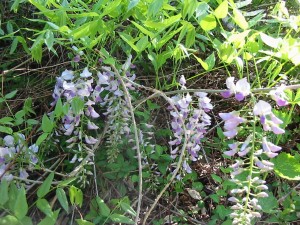
The invasive Wisteria was found in a former farm field. Â We are very worried about this one because it has invaded a section of Morris Park covering several acres.
The Schuylkill Center For Environmental Education was a special day for us. Â We experienced the whole routine of a degraded urban forest (our daily reality), a serious effort at environmental restoration (Also a daily activity), and a magnificent forest full of native trees, shrubs and herbaceous plants that we want to protect and save. Â We are so happy to have visited this great place just a few miles from Morris Park that we feel a true kinship with.
We at the Sanguine Root have  been actively visiting sites across the city and across the region, where there is work being done similar to ours. We want to be able to learn from the successes and mistakes of others, to broaden our horizon. To be able to compare and contrast is important in any milieu.  Of course we can always do better, but are there mistakes we can avoid? Is there a more efficient way to achieve our goals?  Or do we get confirmation that we are on the right track, that we are actually doing alot of the right things?
These questions are part of why we visit so many other sites in our adventure in urban environmental restoration. We learn so much from visiting other areas of Fairmount Park, or natural areas such as the Schuylkill Center. Â Just seeing what plants grow where and why helps us understand why the plants that grow in Morris Park grow where they grow.



Where can I buy one of the Japanese Angelica Trees
Barbara, I hope you were able to read and understand the content we provided regarding this plant. We also provided links to other posts as well as links to other websites that discuss the Japanese Angelica tree. If you live in the specific part of eastern Asia, where this plant grows in its natural range, you may
Want to contact the local nurseries about acquiring it. It is grown as a food source and it’s young shoots are eaten. If you live anywhere else, you may want to think twice about planting this, and should consider a native alternative that would be appropriate for your area. This would be a plant that provides dense shade and grows about 25 feet tall.
In our area of Southeastern Pennsylvania, this plant was introduced and has become invasive and problematic. It is destroying natural lands and has become a menace that requires time and money to control. If you live in the Eastern U.S, There are many regions mostly in the Southern portions that have a very similar plant, called the Devils walking stick, (Aralia Spinosa) that we recommend as an alternative. To see a native range map for this, check with the US geological survey.
Mark, That is a great idea. Lately most of the places we visit are within ten miles of Morris park.
The butterfly photo is terrific! Every detail is so clear. Good shot!
Your Spring is so far advanced, so quickly. I’m amazed at all the leaves on the invasive Japanese Angelica tree….
I hope to see a map soon showing the relationships of the various sites you are visiting. Is this in the works?